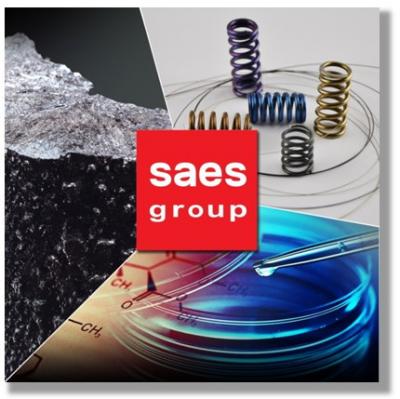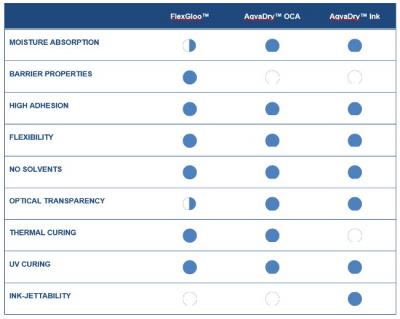Leveraging on their unique, distinctive properties, OLEDs are enabling brand new lighting and display opportunities, giving rise to an entire portfolio of portable, fully conformable, feather-light and, possibly, low power high definition display devices.

Anyway, OLEDs are nowadays facing the same issues they had since the beginning: basically, OLED materials are extremely sensitive to oxidizing agents and, especially, to moisture. This requires encapsulation materials with exceptionally high barrier properties, and active fillers or getters, capable of absorbing water on a single molecule basis. The optimization of many functional properties in single encapsulating materials is a very complex materials science problem. The fact that OLED materials can also be very sensitive to heat or radiations, generates many process constraints as well.
It turns out that encapsulation materials must be specifically engineered taking into account the OLED structure, the device architecture, the chemical and physical nature of the materials and, besides these, the specific processes to be applied. Perfecting OLED encapsulation is thus a very challenging task, which requires deep technical interaction between advanced encapsulation materials providers and OLED makers.
As an advanced materials Company, SAES Group has developed a comprehensive portfolio of functionalized polymer composites, to be integrated in a plurality of OLED device architectures: all are solventless formulations, which can be applied via screen printing, blading, syringe, ink-jetting, ODF and even be employed in thin film encapsulation structures, to make them simpler and more reliable.
Once you want to go flexible, encapsulation gets more and more challenging, because materials and configurations must guarantee both good barrier/getter properties and mechanical properties, such as flexibility, adhesion, durability, robustness.
Epoxy systems are widely used for glass to glass encapsulation due to their extremely low polymer chain mobility, but this is accompanied to a typical glassy behavior, which makes them hardly compatible with a true flexible system. Combining good barrier properties of a glassy epoxy system with an increased polymer chain mobility is not trivial and hard work must be addressed to the structure of the polymer backbone, the distribution of molecular weights, the glass transition temperature, the optimized dispersion of tailor-made getter particles.
Following this development path, SAES Group has lately strengthened its FPC (Functionalized Polymer Composite) portfolio with a brand new fully flexible barrier sealant (FlexGlooâ¢) and two more versions of the AqvaDry⢠product family: AqvaDry⢠OCA (Optically Clear Adhesive) and AqvaDry⢠Ink.
With its lap shear strength of 0.4 MPa on PET and its normalized WVTR of 0.2 g *mm/m2 *day (23 °C, 65% RH), FlexGloo⢠positions itself as a top performing edge sealant for plastic electronics. If coupled with AqvaDry⢠OCA, which guarantees more than 10% water sorption capacity without changing its full transparency, a reliable and durable solution for laminated flexible devices is guaranteed.
In TFE (Thin Film Encapsulation) structures, AqvaDry⢠Ink has proved to be a performance enhancer, acting both as an organic planarization layer and a getter for moisture: the use of AqvaDry⢠Ink as an active organic layer enables the use of fewer inorganic barrier layers (e.g. SiNx, SiOx), thus limiting the number of processing steps and the associated times and costs.
These materials under fine tuning with selected partners - complement the lineup of SAES Group solutions for encapsulation, now addressing the emerging needs of the flexible electronics industry. SAES has been invited to present its newest developments at the next SPIE International Printed Electronics Conference (IPEC 2016) in Seoul (Korea) on June 29th 30th and the next OLEDs World Summit in San Diego (CA) on September 20th - 22nd.
Read more about SAES approach to the design of active systems for devices encapsulation on http://www.saesgroup.com


